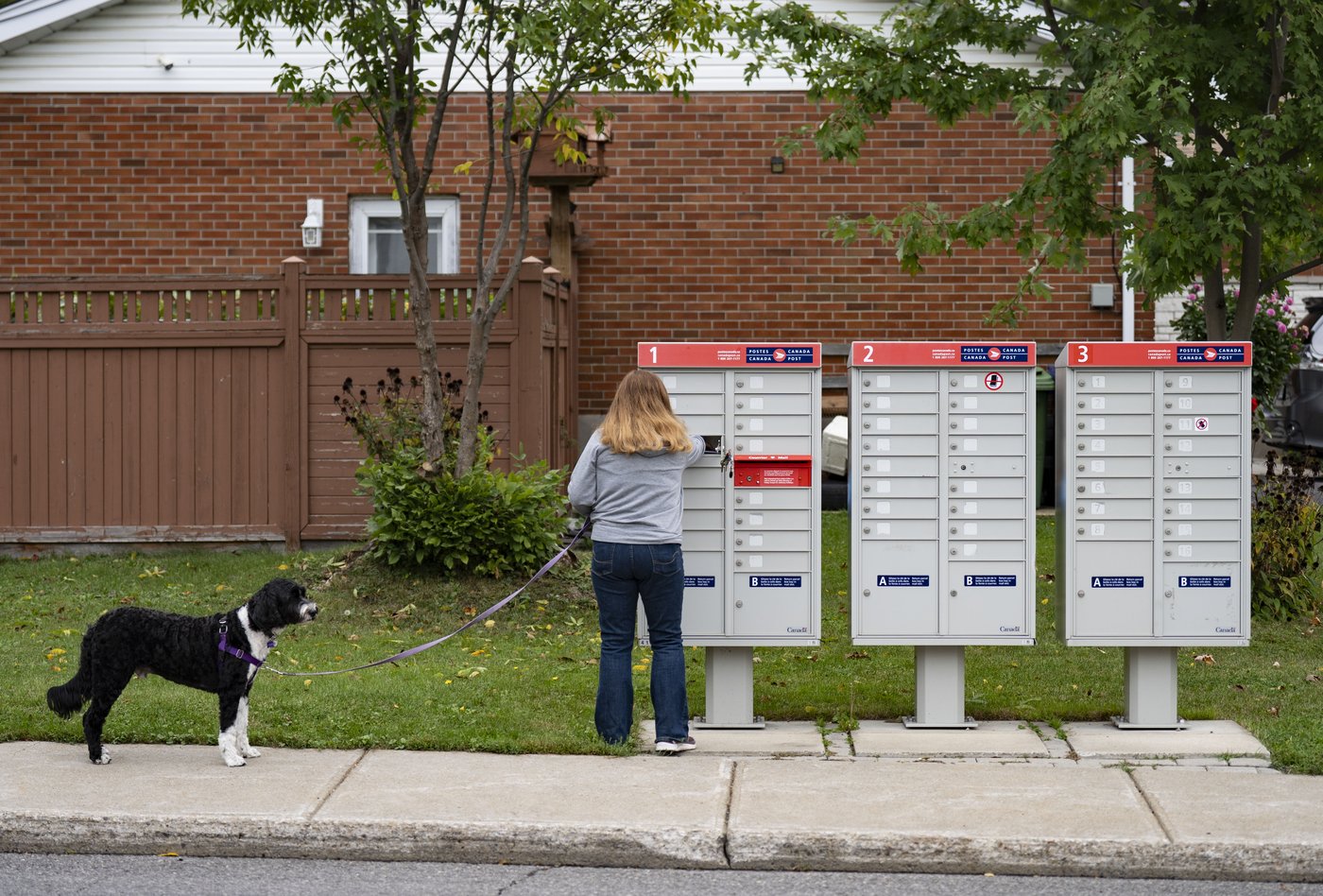Has time run out for Canada Post?

Is Canada Post doomed, a victim of tech changes and new competition that have made daily mail delivery irrelevant?
Or has the 174-year-old institution been strangled by government policies that limited its chance to compete and block new ways of growing revenue?
The federal government asked William Kaplan to answer those questions last year after a strike by 55,000 Canada Post workers halted parcels and letter delivery across the country.
Last May, he delivered the “Kaplan report,” which said Canada Post was effectively insolvent and needed to drastically change services to survive.
Kaplan’s review found that the union’s proposals to increase Canada Post revenues by expanding into new areas like banking were unrealistic. Instead his recommendations included ending door-to-door home mail delivery, letting the corporation close post offices and making use of flexible part-time workers.
The Canadian Union of Postal Workers, or CUPW, staunchly opposes Kaplan’s recommendations. When the federal government let Canada Post implement some of the service cuts last month, workers walked off the job a second time before starting rotating strikes Saturday.
The tension highlights the postal service’s existential crisis.
While the union is fighting hard to protect its members’ jobs, Canada Post says it’s bankrupt and needs to drastically change its services as demand for letter mail and parcel delivery plummet.
But CUPW alleges Canada Post is crying wolf and using the labour instability to push business over to Purolator, a private courier 91 per cent owned by Canada Post.
“Management is being deceptive about parcel volumes and the share of the parcel market they claim to have lost,” the union said in a press release last week.
“The government’s interventions have only emboldened the employer and undermined free and fair collective bargaining.”
It’s calling for Canada Post to come to the table with a better offer for members.
The case for service cuts
Canada Post says it’s seen significant losses over the past seven years. In 2024, for example, Canada Post had $6.1 billion in revenue and $446 million in net investing income. The same year, it spent $7.4 billion, leaving a loss before tax of $841 million.
Canada Post spokesperson Lisa Liu said in an email that its mandate is to deliver items to all Canadians while remaining financially stable. But with less to deliver and more addresses to serve each year, revenues are declining while costs are rising.
Labour and benefits accounted for 65 per cent of spending, according to Canada Post’s annual financial report. It attributed its losses primarily to declining demand for parcel and letter mail and labour instability.
“We need to fix our core delivery service so that we can reduce costs and grow revenues,” Liu said. “That has been our focus throughout negotiations, such as our proposals to add weekend parcel delivery.”
The Kaplan report lays out a path forward for Canada Post.
In the report, Kaplan attributed the problem to plummeting demand for letter mail and collective agreement rules that stop Canada Post from hiring part-time, flexible workers — measures the union has previously said would mean shifting full-time jobs into more precarious gig work.
He also said the crisis is partly due to government measures like the 1994 moratorium that prevented the corporation from closing locations in rural areas, a measure intended to ensure all Canadians could access service.
Letter demand is falling across the world, not just in Canada, Kaplan said in the report. In 2006, Canada Post delivered approximately 372 letters to each Canadian household. By last year that number had dropped to 113.
“There is every reason to believe — and no reason not to — that the letter mail decline will continue and that this trend is irreversible: not a levelling off, but almost certain and eventual extinction,” Kaplan said in the report.
Kaplan’s report says Canada Post’s opportunity lies in the parcel market.
But competition is stiff. Businesses are quickly turning to private couriers to ship parcels across Canada. In 2019, Canada Post delivered 62 per cent of Canada’s parcel market, according to the Kaplan report. By 2023, the postal service delivered only 29 per cent.
Kaplan notes the parcel market is “completely deregulated” and has no real barriers to entry, letting competitors provide quick, reliable and cheap parcel service.
While Canada Post is closed on weekends, Quebec-founded parcel service Intelcom offers delivery from 8 a.m. until 9 p.m. seven days a week, and its drop-off locations never close.
“[Competitors] can charge what they want — subject to fiercely competitive market forces — and deliver where they choose,” Kaplan said. “Canada Post’s competitors want it all, and they are not standing still.”
Meanwhile, competitors like Amazon — notorious for its anti-union stance and proud of its use of flexible part-time workers — can aggressively chase new technologies, like delivery drones, Kaplan writes.
“The Government of Canada, Canada Post, and CUPW must blaze a new trail,” Kaplan writes. “This will not be easy.”
Kaplan’s solution? To admit that letter mail is going extinct and let the service expand to seven-day-a-week parcel service to compete with its privatized rivals.
Ian Lee, a business professor at Carleton University in Ottawa, said Kaplan’s recommendations address a reality that has been obvious for years.
Lee, who wrote a thesis about the corporation for a PhD in public policy, said Canada Post needs to focus on parcel delivery if it wants to survive.
“Either they’re going to make it in parcels or they’re going to die, because letter mail is going to vanish,” Lee said.
Lee said that where delivery is profitable in the big cities, it’s already too late for Canada Post to compete with private couriers like Amazon or FedEx.
Instead, he recommends the business massively scale down to focus on parcel delivery to rural areas that private couriers don’t cover.
“People are still going to continue to live there,” he said. “They’re going to demand that they be looked after. So I think what will happen is the post office could reinvent itself as the organization that services this niche of Canadians.”
However the organization pivots, Lee said, declining letter and parcel volumes mean that Canada Post will not be able to support 60,000 employees. Lee said the company will likely have to “radically” downsize and cut down on its biggest spending if it wants to stay afloat.
“It’s not sustainable to maintain 55,000 people because the demand has collapsed,” he said. “They’re bleeding to death on the sidewalk and you got to stop the bleeding.”
He estimates that Canada Post could sustainably employ up to 20,000 employees. That’s still more than Fedex or UPS, which employ 13,000 workers in Canada each, or DHL, which has 2,700.
But the union says there are other ways to save Canada Post.
Kate Holowatiuk, president of CUPW Local 850 in Victoria, said the Kaplan report was based on a small amount of data from Canada Post and didn’t consult enough with CUPW.
“It’s biased and just based on such a little, such little amount of input,” she said.
The case to expand business
The union has suggested Canada Post protect jobs by upping stamp prices and expanding its services. Several ideas include expanding into grocery delivery and creating artisanal markets at postal stations.
The Kaplan commission didn’t support the union’s propositions. Kaplan dismissed grocery delivery and artisan markets as non-credible solutions, where Canada Post could once again be outcompeted.
App-based gig workers already deliver groceries through Uber Eats and Instacart, for example.
But Holowatiuk said Kaplan’s reasons for dismissing the ideas weren’t convincing.
“We meet with other postal union representatives across the world; we didn’t just make up all of these ideas,” she said. “We look to see how have they been able to protect jobs and your end services for your communities.”
The union has also proposed Canada Post expand into public banking to increase its revenue, like postal services have done in Switzerland, New Zealand and France.
Postal banking services abroad have earned billion-dollar profits.
Poste Italiane in Italy, for example, offers banking, investment and asset management services through its banking system, BancoPosta. It’s captured a share of the same market that includes the oldest bank in the world, Banca Monte dei Paschi di Siena.
According to its website, Poste Italiane’s financial services alone bring in approximately C$8 billion in revenue annually.
La Banque Postale in France, meanwhile, has posted more than $1 billion in revenue so far this year.
Canada Post is experimenting with financial services. In March, the corporation launched MyMoney Account, a new spending and savings account to be run in partnership with Vancouver-born financial technology startup Koho.
But critics are skeptical that financial services could generate enough profit to make up for the corporation’s losses.
A federal government-appointed task force looked into four approaches to postal banking in 2016.
It considered business models including developing low-cost banking products that would provide a lower-cost alternative to payday loans, or partnering with up to five financial institutions to provide a low-cost extension to the existing branch network in places where having a bank is less profitable.
Canada Post’s Liu said only the option of partnering with three to five banks would be a viable opportunity.
Still, Liu said it would be “only marginally profitable with high investment risk, including the assumption that banks or credit unions would agree to partner with Canada Post.”
“Our focus is to fix our core business — to deliver items to all Canadians,” she said.
Carleton University’s Lee said that while postal banking has been profitable abroad, Canada Post does not have the resources or money to invest in banking infrastructure, or in training or hiring people to be bankers.
“The idea that Canada Post can go into banking is just truly delusional,” he said. “I’m not saying it to slam [CUPW]. I’m just saying they don’t understand banking.”
The Purolator controversy
The union also claims that Canada Post is chasing away its own business to boost Purolator’s profits — allegations Canada Post categorically denies.
Still, the union took its picket line to Purolator locations in late September.
“We believe that management has also been using Purolator to run Canada Post into the ground,” the union said in an Oct. 9 press release. “By sending product to its subsidiary while postal workers are in a legal strike position, Canada Post is doing an end run around the new anti-scab laws.”
Canada Post’s Liu said the strike action has resulted in uncertainty, so customers are avoiding Canada Post in favour of other services of their own accord.
“Canada Post’s parcel volumes have dropped due to uncertainty as customers make their own decisions and have chosen other carriers,” Liu said. “The claim that the company is purposely being undermined is completely false and has no basis in fact.”
The first time Canada Post went on strike in November 2024, Purolator announced it was ready to take on extra parcels because of the labour action.
“Purolator is open for business,” senior vice-president Chris Spanjaard said in a November press release. “Our network is well prepared and ready to deliver continued success for our customers, and all Canadians, including those who have been impacted by the recent Canada Post labour disruption.”
Canada Post is the majority owner of Purolator, and Canada Post president and CEO Doug Ettinger sits on Purolator’s board of directors.
André Hudon sits on that board and also chairs Canada Post’s own board of directors.
And the union has highlighted that Purolator has seen parcel volumes increase while Canada Post sees losses every year.
Canada Post reported Purolator had profits before tax of $293 million in 2023 and $294 million last year.
Liu added Canada Post cannot make money while the union is on strike. On Oct. 11, the union switched from full labour stoppage to rotating strikes.
The end of Canada Post?
It’s not clear how much longer Canada Post can survive. Kaplan writes that without the $1 billion bailout the federal government gave the corporation in January, Canada Post would have been unable to meet its current financial obligations.
Canada would not be the only country without a public postal service. The United Kingdom and Germany have already fully privatized their postal operations.
In March, Denmark announced its postal service would stop delivering letters, citing years of financial struggles and a 90 per cent decline in letter volumes since 2000.
Kaplan nodded to the situation in Denmark in his report as “a cautionary tale that one ignores at their peril.”
“Without an efficiency overhaul, Canada Post will be unable to retain, much less grow, its share of the parcel delivery market,” he said. “CUPW should bring to bear all the skill and smarts it has repeatedly demonstrated through its storied history in working to evolve the post office.”
Lee said much of Canada might not even need a postal service. He said the majority of letter mail, like health, tax and legal documents, can be digitized, while physical products like identification and banking cards can be sent through private couriers.
Still, Lee said, in some rural and remote areas where Canada Post is the only delivery service, the service is still essential.
“Canada Post’s only future is in parcels to rural, remote parts of Canada where there is no private alternative,” Lee said. “If they were to survive at all, that’s their niche.”
But for now, it’s still up to the union and Canada Post to find a way forward.
CUPW’s Holowatiuk said the labour negotiations were not the place to decide the future of Canada Post. She said if Canada Post planned to follow Kaplan’s recommendations, it would need to change its mandate.
The federal government is scheduled to start a review of Canada Post’s mandate this month. Holowatiuk urged it to consider feedback from rural and Indigenous communities who rely on the postal service.
She added the members are determined to protect their jobs and are still looking for a better offer from Canada Post.
“We’re being strong-armed into submission here, and we’re certainly not going to back down,” Holowatiuk said.
Last week, Minister of Jobs and Families Patty Hajdu told The Tyee the two sides would have to come to a deal together.
“They have in many cases relied on the government to resolve these issues for them,” she said. “But now we are at sort of a crossroads, and I think they both need each other.”
— This article was originally published by The Tyee as part of the Local Journalism Initiative
Join the Conversation!
Want to share your thoughts, add context, or connect with others in your community?
You must be logged in to post a comment.


















